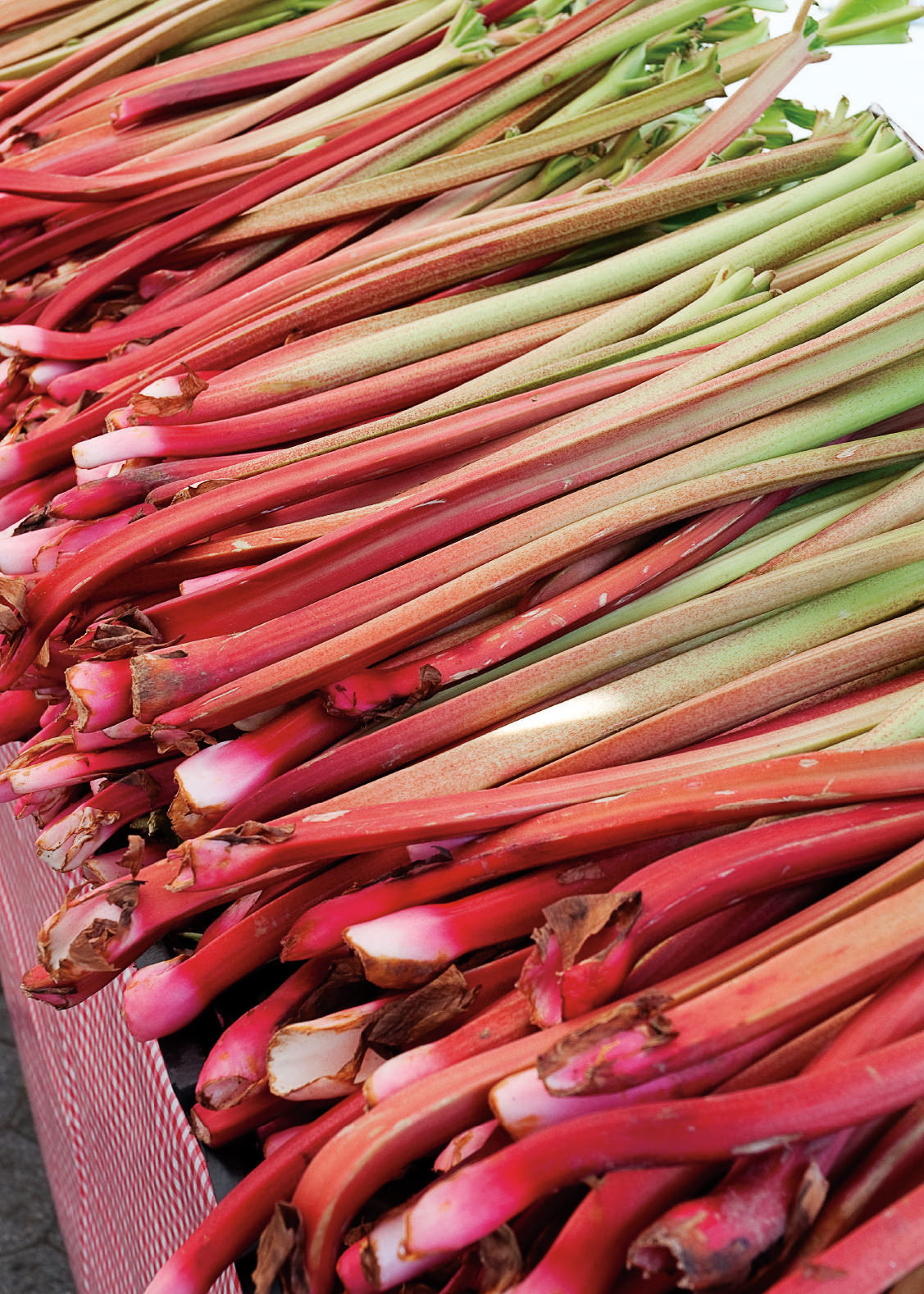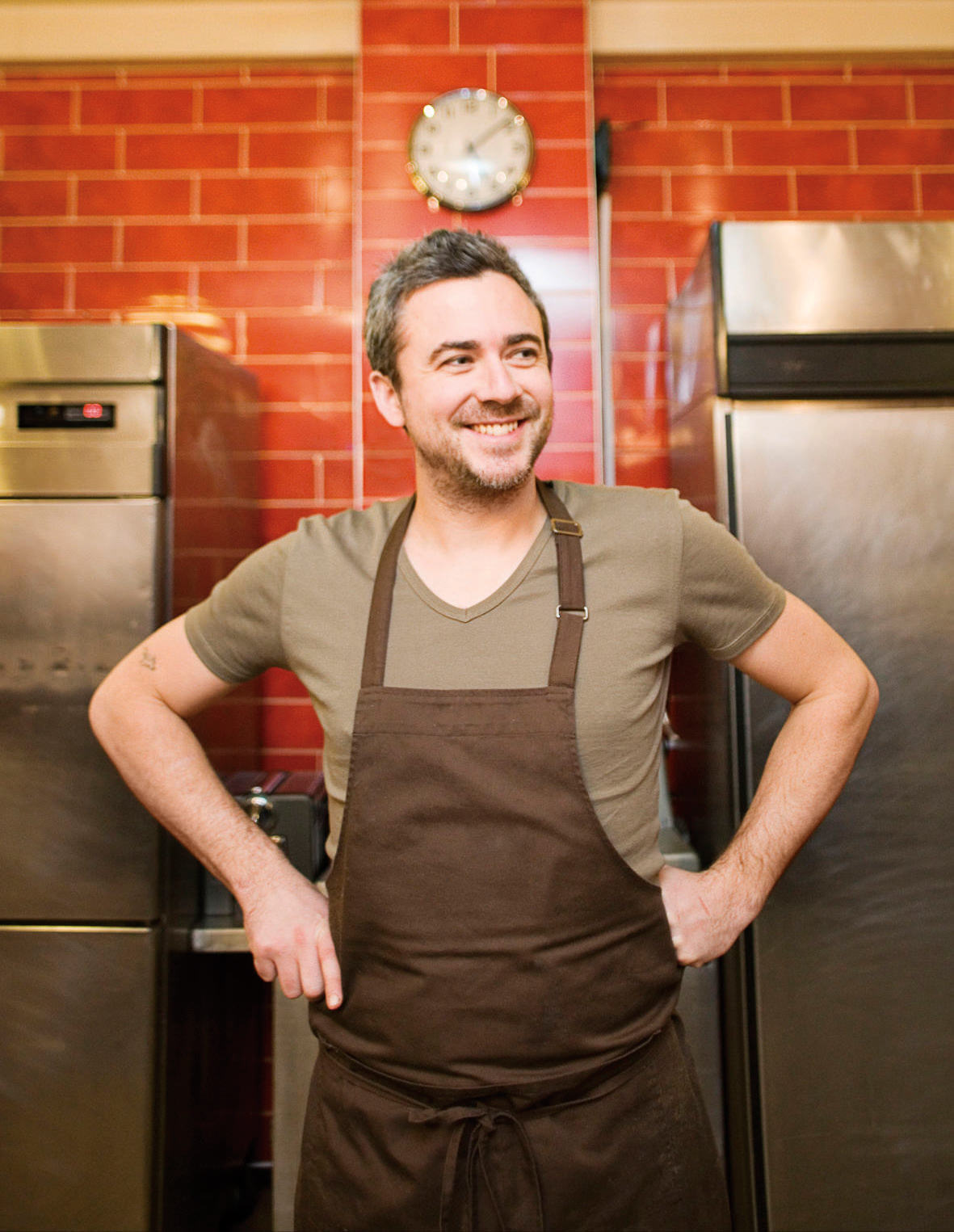Q&A: Chef Massimo Bottura
Food for the soul.

Perhaps, if you’re lucky, you’ve dined at chef Massimo Bottura’s Osteria Francescana—the three-Michelin-star restaurant in Modena, Italy, he opened in 1995. Or maybe, you’ve seen Netflix’s Chef’s Table documentary series that captures Bottura in action, enigmatically explaining his cooking ethos and the stories behind his dishes—each comes with its own compelling narrative and name, such as the “Oops, I Dropped the Lemon Tart” dessert, a work of artfully smushed citrus zabaglione. Or perhaps you are one of the Milanese residents for whom Bottura’s Refettorio Ambrosiano project, a soup kitchen he launched in a refurbished refractory at Expo Milan 2015, provided a helping hand. Backed by Pope Frances and featuring participation from celebrated chefs René Redzépi, Alain Ducasse, and Mario Batali, who all dropped by to cook for free, Refettorio Ambrosiano was the first of what Bottura hopes to expand into a global Food for Soul program, in which food items that would have otherwise been wasted (think peels, scraps, and surplus) are instead transformed into nourishing meals. However you’ve heard of him, Bottura leaves an impression. In advance of his appearance at C2 Montreal this month, we connect with Italy’s most progressive sustainable chef to discuss his current inspirations, his nostalgic preference for stale bread, and why he feels cooking is the ultimate act of love.
In your Chef’s Table feature, you say “Tradition, most of the time, doesn’t respect ingredients” while discussing your dish of “walking” tortellini. But you have also said your interest in cooking came from watching your mother and grandmother cook. How do you reconcile the pleasures of nostalgia with the necessity to progress?
My kitchen indulges in both, actually. Whether we realize it or not, culinary traditions are in constant evolution. It is a mistake to think that they should be fixed or put under glass. What is a traditional recipe after all? Most likely, it was an experiment or an improvisation that was successful, surprisingly delicious, seasonal, and used local ingredients—even kitchen scraps and left-overs. Some of the most famous recipes from the Italian kitchen have come out of a seemingly empty pantry, some leftover bread, and a handful of good luck.
I like to think that our kitchen at Osteria Francescana is connected to this tradition of innovation, experimentation, and trial and error. We try to keep ourselves constantly in evolution by never taking for granted that we “know everything,” but that there is always something more to be discovered in the kitchen. For example, our meat ragout and broth recipes are continually reviewed and tweaked, improved and experimented with. We oscillate between traditional and contemporary techniques, adjust the recipe according to the ingredients available, and ask ourselves hard questions, such as “Are we really sure that the traditional recipe respects the ingredients?” If not, we, as contemporary chefs, feel obliged to change the recipe, improve it, and move it forward.
I find that this way of thinking is in tune with all of the arts, whether it be music, theater, dance, or literature. We all work within our genre, look to the past and try to bring the best of it into the future. Sometimes that means letting go of something and adopting a new style, technique, or attitude; at other times, it means being traditional or conservative when others are not. In my heart of hearts, I feel most comfortable when I am swimming upstream, against the current and looking for my own interpretation of history, culinary traditions, and my identity.
You draw upon moments in your life to inspire your recipes. What emotional memories are currently capturing your imagination?
The past year has been a very emotional one for me. The Refettorio Ambrosiano project and the founding of Food for Soul are both directly related to my memories of growing up as a kid—the way my mother ran her kitchen and the kind of waste-free cooking I was raised with. All of these memories have come together to push me to be a more ethical and socially active chef. When I lost my mother in January 2014, I realized the greatest lesson she taught me was [that] cooking is an act of love. This has permeated everything over the past two years.
Right now we are working on a new cookbook, Bread is Gold, from the recipes that 65 chefs created during Expo at the Refettorio Ambrosiano soup kitchen in Milan. This will be an amazing book for home cooks, kids, aspiring chefs, and also a new model for soup kitchens. All the recipes are simple, made with ingredients that most of us have somewhere in the pantry or about to spoil in our refrigerators. It’s a book that looks at tradition from a very open point of view, and maybe will define a new tradition, one more connected to who we are, how we shop, and the reality of our kitchens—not the idealized version.
In addition to that, we’ll be opening a soup kitchen in Rio… Maybe one in New York, Detroit, L.A., or Berlin in 2017. These aren’t everyday soup kitchens but spectacular places, often revived from abandoned industrial spaces, which are filled with beauty, art, design, and delicious food. We are cooking with salvaged waste—or food that could easily be thrown away—and teaching the next generation to be more careful with our precious resources. I believe that food can be a bridge between rich and poor, hunger and waste. It can be a bridge for people to create new communities. This is a cultural project, not a charity project. And culture is really the most important and influential aspect of the future of food. Without culture we don’t know who we are, we lose our sense of identity. With culture we gain knowledge and consciousness. And from there it is a very small step to becoming socially responsible—for yourself, your family, your business, and your community. We are all in this together.
What element of your past is one which you have been toying with transforming into a new dish, and how did it come to you?
In the Osteria Francescana kitchen we are always playing with our culinary memories and looking for new ways to make them accessible to our guests who come from all over the world and may not share our childhood flavours. This desire to share the true Italian kitchen with guests from all over the world is very exciting but also difficult. People love and adore the Italian kitchen and with that, no one wants it to change (especially the Italians!). Our work is not about forgetting the past but finding the most appropriate way to present it and share it with our guests today—in the year 2016 and beyond.
A dish I am in love with is a play on three classical Mediterranean fish preparations. It looks like something we took out of the trash but tastes hauntingly like my memory of the little hotel on the Adriatic where we vacationed with my family. Every night there was fish offered and it was always and only prepared one of three ways: sotto sale (baked under salt), alla mugnaia (sautéed in a wine and butter sauce), and al cartoccio (cooked in wrapped parchment or foil). To push the memory into reality, we’ve combined the three. This dish addresses our desire to insure that the Italian kitchen doesn’t stop with the Italian kitchen we know, but makes way for the one we have yet to discover.
You are always aware of and analyzing your surroundings—is there an element of Canadian food culture you admire or have had influence your work, and why?
I ended my last trip to Montreal with a grand finale at a sugar shack. It was cold outside and we were eating like no tomorrow. The combination of high and low, basically maple syrup and pork every which way, was a revelation. We got into our Sugar Shack mode and came up with a savory dessert pancake with maple syrup and grilled foie gras that was served at Osteria Francescana for a while after that trip. Who knows what will happen on this one!
Limiting food waste is an interest of yours; can you share why you feel drawn to the issue, and how you have begun to take steps to respond to it?
As I mentioned, it all began thinking about my mother and the culinary lessons she taught me. We never wasted anything at home—not even a breadcrumb. In fact, as a kid, my breakfast was warm milk with toasted breadcrumbs, a drop of coffee, and lots of sugar. The decision to work against not wasting food came out of an emotional place, not necessarily an educated or environmental point of view. But the more I learned, the more I spoke with people and studied the food distribution chain, the more horrible things I saw. The craziest statistics come from our own homes, in Europe and America, where we are wasting up to 40% of the food we buy. Those numbers scared me and I decided to start speaking up and doing something about it. Food for Soul is a nonprofit organization that I founded in February 2016 to inform, inspire, and educate people about food waste and make a change for the better.
What do you feel is the biggest challenge when it comes to reducing food waste, and how will we overcome it?
The biggest challenge is time. We are all so busy and never have enough time to prepare the meals we’d like to. Not wasting is easy if you take the time to shop properly, use everything in your refrigerator and pantry, and explore the full range of recipes that can be created from an ingredient—not just the “nice” part, but even the potato peels, carrot tops, discarded leaves, wilted lettuce, banana peels, expired milk and dairy, and of course, leftover stale bread. This is what Bread Is Gold is all about: rethinking our definition of ingredients from the farm-to-table obsession to looking through our trash (or at least the back of our refrigerators) for hidden treasures. If we can teach our children to be less wasteful, all of our futures will be brighter (and more delicious!).




